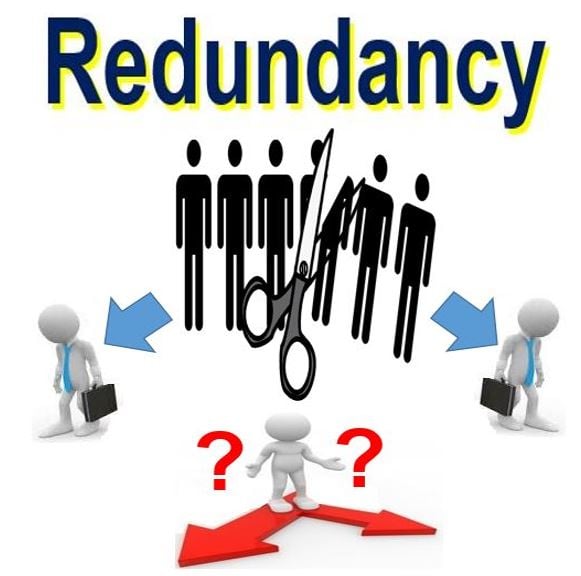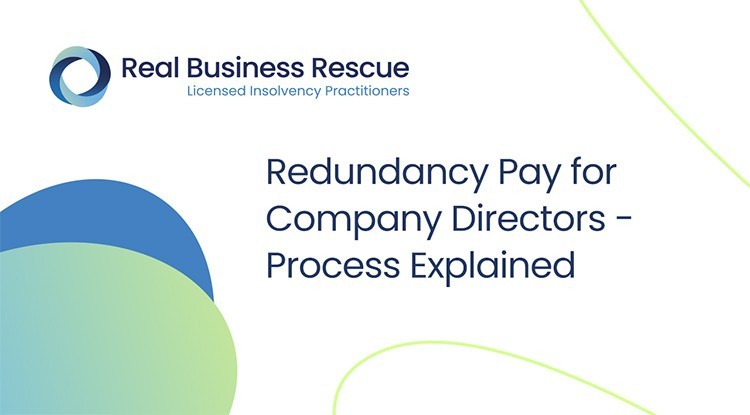Clarified: If a Company Goes Bust Who Pays Redundancy in the UK?
Clarified: If a Company Goes Bust Who Pays Redundancy in the UK?
Blog Article
Examining the Interplay In Between Business Redundancy and Organizational Versatility for Future Development
In the dynamic landscape of today's organization world, the elaborate partnership in between business redundancy and organizational versatility emerges as a crucial aspect for sustained growth and success. Business commonly deal with the obstacle of striking a fragile balance between keeping a degree of redundancy to mitigate dangers and fostering adaptability to react swiftly to the ever-evolving market demands.
Importance of Business Redundancy
Firm redundancy is a crucial aspect that boosts organizational durability and reduces functional dangers. By including redundancy procedures within the business framework, companies can much better stand up to unexpected interruptions and changes in business setting. Redundancy functions as a calculated barrier, allowing companies to adapt and react efficiently to unexpected obstacles without jeopardizing vital operations.
One key aspect of the importance of firm redundancy is its duty in guaranteeing connection throughout times of situation. When faced with abrupt modifications or emergency situations, repetitive systems, resources, or employees can tip in to keep vital features and avoid prevalent disruptions. This continuity not just safeguards the company's credibility and customer trust fund however likewise decreases monetary losses and operational downtime.

Strategies for Organizational Adaptability

Another crucial technique is buying technology and framework that can support adaptability and scalability. Implementing digital devices, automation, and information analytics can enhance procedures, improve effectiveness, and provide important understandings for informed decision-making. Furthermore, creating adaptable organizational structures that enable for fast modifications to market characteristics and client requirements is crucial for remaining competitive in a rapidly progressing environment. By proactively recognizing prospective interruptions and opportunities, organizations can proactively adjust and prosper in an ever-changing company landscape.
Harmonizing Redundancy and Versatility
Achieving an unified stability in between operational redundancy and business flexibility is paramount in browsing the complexities of a vibrant organization environment. Striking the appropriate balance between redundancy and flexibility is a delicate procedure that needs a deep understanding of the organization's objectives, industry dynamics, and threat resistance.
To attain this balance, firms require to perform normal assessments of their procedures to identify areas where redundancy is essential for risk reduction and where adaptability can drive development and development. Applying flexible frameworks, fostering a society of continual learning and improvement, and urging open interaction throughout all levels of the company are essential techniques to balance redundancy and versatility successfully. By aligning these 2 critical components, firms can place themselves for sustainable growth and success in an ever-changing company landscape.
Case Researches on Adaptation Success
In examining circumstances of effective organizational adjustment, it comes to be obvious that the interaction in between operational redundancy and flexibility is a specifying factor in forming durable services. One compelling situation research is that of Netflix. Originally a DVD rental service, Netflix demonstrated amazing versatility by transitioning into a streaming platform when digitalization interfered with the sector. By strategically investing in technology and content production, Netflix not only endured but thrived in a rapidly progressing market. An additional standout instance is Amazon. Starting as an on the internet bookstore, Amazon constantly adapted its business version, increasing right into diverse fields such as cloud computer and synthetic intelligence. This versatility permitted Amazon to stay in advance of competitors and fulfill changing customer demands. Last but not least, Adobe supplies a significant illustration of effective adaptation. The firm changed from selling software application licenses to a subscription-based version, ensuring recurring profits streams and enhanced client engagement. These study emphasize he has a good point the importance my company of functional redundancy combined with business adaptability in promoting lasting growth and competition.
Building Durability for Future Development
Building durability for future development calls for a critical alignment of functional procedures with market dynamics and arising patterns. Firms need to adapt to changing atmospheres by promoting a culture of adaptability, advancement, and continuous enhancement. Strength involves not just bouncing back from obstacles yet also proactively preparing for future challenges. One essential facet of structure strength is investing in robust threat monitoring techniques to minimize possible interruptions. This includes situation preparation, expanding supply chains, and creating contingency prepare for different backups (who pays redundancy money).
In addition, cultivating solid relationships with stakeholders, such as customers, employees, providers, and the community, is vital for weathering uncertainties and keeping trust and assistance throughout stormy times. Reliable communication and transparency play an essential function in structure strength, as they assist align assumptions and facilitate partnership in navigating uncertainties.
Furthermore, organizations need to prioritize understanding and advancement efforts to upskill employees and furnish them with the essential devices to adjust to changing scenarios. By purchasing their workforce, business can improve their versatility and dexterity, inevitably enhancing their durability for sustainable future development.
Conclusion

In the dynamic landscape of today's service globe, the detailed partnership in between company redundancy and organizational browse around this web-site adaptability emerges as a crucial variable for continual development and success. Business usually face the challenge of striking a fragile equilibrium between maintaining a level of redundancy to mitigate threats and cultivating versatility to react promptly to the ever-evolving market needs.To achieve this balance, business need to perform normal evaluations of their operations to determine locations where redundancy is necessary for danger reduction and where adaptability can drive advancement and development.In conclusion, the interaction between business redundancy and organizational versatility is vital for future development. Structure strength with a mix of redundancy and adaptability will certainly guarantee that firms are prepared for the challenges of the future.
Report this page